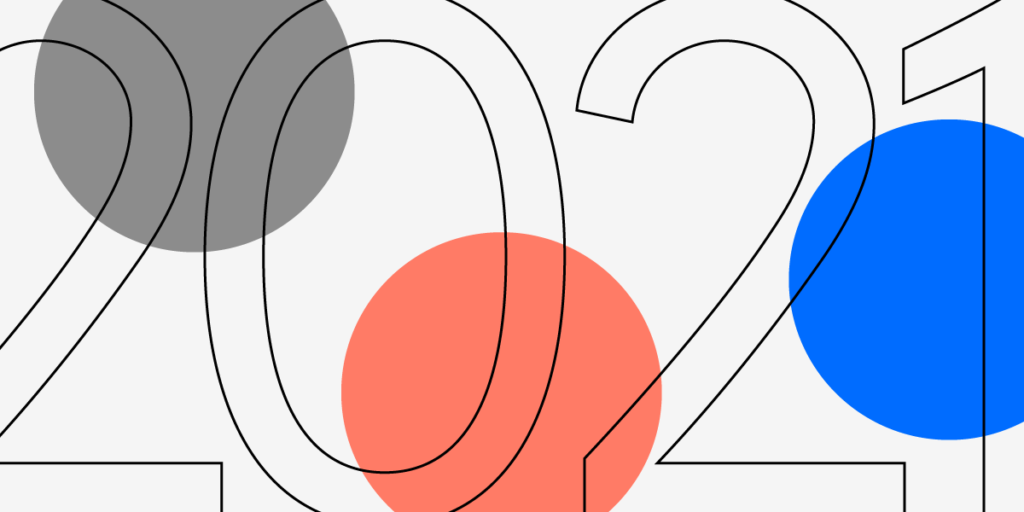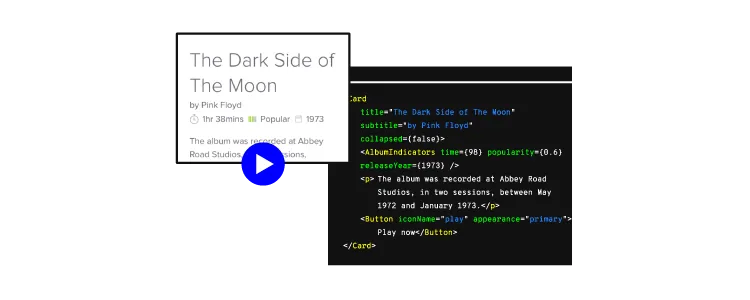
Design Trends 2021
Each year brings fresh design trends for people to enjoy. After 2020, expect a lot of—hopefully—fun surprises in 2021. The following trends will likely stand out from the crowd.
More Animations and Interactions That Increase Conversions
The design trends in 2021 need to do more than look attractive. They need to get results. If an app or website doesn’t generate leads or convert visitors, no one will care how attractive it looks.
Many designers and marketing professionals believe that they can make landing pages more successful by adding more animations and interactions that engage users. This approach makes sense considering that brands have used in-person engagement to cultivate customer loyalty for years.
For example, Coca-Cola personalizes bottles to gain attention from potential buyers. Several years ago, the company even stuffed refrigerators with bottles branded with popular names. Today, you have to request the bottles. At the time, though, Coca-Cola managed to generate quite a bit of buzz from this simple engagement strategy.
With websites and apps, designers need to take a more virtual approach to get similar results. Still, spending a few seconds playing with an app’s animations could boost a customer’s mood enough to increase spending.
An Increased Focus on Design Ethics
Design trends in 2020 need to contribute to business success, but they can’t reach that goal through deceitful practices. When design only focuses on increasing sales, developers can take advantage of audiences.
Making more money right now sounds like a great idea, but it can backfire and lead to long-term failure. Design ethics helps ensure that consumers have all the information that they need to make good choices. Designers need to resist the temptation to hide details or mislead customers, even though doing so could increase revenues.
Design ethics can make professionals feel better about their work. Research shows that brand trust has a growing importance among consumers. About 57 percent of American consumers and 62 percent of global consumers say that brand trust matters because they want to support socially responsible companies. Spreading false information, however, stands out as the top way that a brand can lose consumer trust. Ethical design helps companies avoid damage to their brands.
More Contrast That Grabs the User’s Attention
Contrast has always been a popular way to make designs more attention-grabbing. For example, placing complementary colors like orange and blue next to each other makes it nearly impossible for someone to resist glancing at a design. When you see the contrast, you can’t help but stop and take a look.
Designing with contrast also helps make websites and apps more accessible to people living with impaired vision. Think about how easy it is to read black print on a white background. The contrast helps your eyes focus on the words. The closer the colors get, the harder the text becomes to read. Imagine reading gray text on an off-white background. You’d get a headache within minutes.
Color contrasts will become especially popular in 2021 because designers want to make their work more accessible to a wider range of people. It doesn’t hurt that playing with bold colors is fun!
Playfulness—Because People Need and Deserve It
Isolation during the COVID-19 has increased mental health problems for millions of people. It’s time for playful design. Not because it accomplishes anything in particular, but because everyone deserves a little more fun in their everyday experiences.
Playfulness can take a lot of forms. Some designers like to play by mixing colors that rarely go together. Others might choose to add fanciful scripts, fun puzzles or little mazes to their designs. Anything that distracts people from the ongoing stress of a pandemic deserves applause. If you can add a second of joy to someone’s life with a humorous icon, good for you.
Seamless Surrealism That Doesn’t Create Barriers to Success
Surrealism takes playfulness to the extreme. Even if you know little about art, you’ve probably seen surrealist paintings by Salvador Dali. They often seem like oddly warped versions of reality, as if you’ve somehow taken one step to the left of the dimension you live in.
Seamless surrealism places contradictory images next to—or inside—each other to create a “what the!” experience for the viewer. It might even take you a few seconds to realize that something doesn’t feel right. One moment, you’re looking at children sitting on a bench. The next second you realize that it’s the earth rather than the moon hanging behind them.
Seamless surrealism only works well in graphic design when it gets people to pause without creating a barrier to use. If it confused potential users too much, the design fails. If it sticks in the person’s head without preventing them from submitting a form or finalizing a purchase, the design succeeds.
Increased Diversity and Representation
Black Lives Matter and other social movements have finally forced many people to realize that they make boring designs that don’t represent humanity’s diversity. Diversity and representation matter in so many ways.
From a business perspective, you want all consumers to buy from your brand. When a company’s website only has pictures of white men and women, people of color will probably go elsewhere. And they take their money with them.
From an artistic perspective, it just makes sense to integrate as many types of people as possible into your designs. In 2021, you don’t have to limit yourself to your country’s “norm.” You can use your talents to depict other body types, colors and activities.
Diversity has already become a trend. In 2021, expect it to become a requirement.
Design That Is Based on Code
Digital products need interactive components that gather information from users, encouraging visitors to return, and make experiences more enjoyable. Historically, there has been a gap between the graphic designers who make attractive images and developers who add interactive features to the products. Code-based design is eroding that gap.

Merge gives graphic designers a no-code solution to add interactive components to their prototypes. They can use the drag-and-drop environment to insert commonly used components directly into their designs. Now, they don’t have to confer with developers or worry that someone else will radically change their work. Instead, they can create impressive UI/UX designs that function precisely as expected.
Coding must play a role in 2021’s design trends, but decisions don’t belong solely to developers. As new prototyping platforms emerge, designers and developers can work together seamlessly toward a common goal.
Test 2021 Design Trends With UXPin
With Merge, UXPin’s revolutionary technology, companies like PayPal can easily solve DesignOps challenges. UXPin Merge allows you to design with React components to achieve full consistency with the final product. Get access to Merge by UXPin so you can see the benefits of code-based design.

